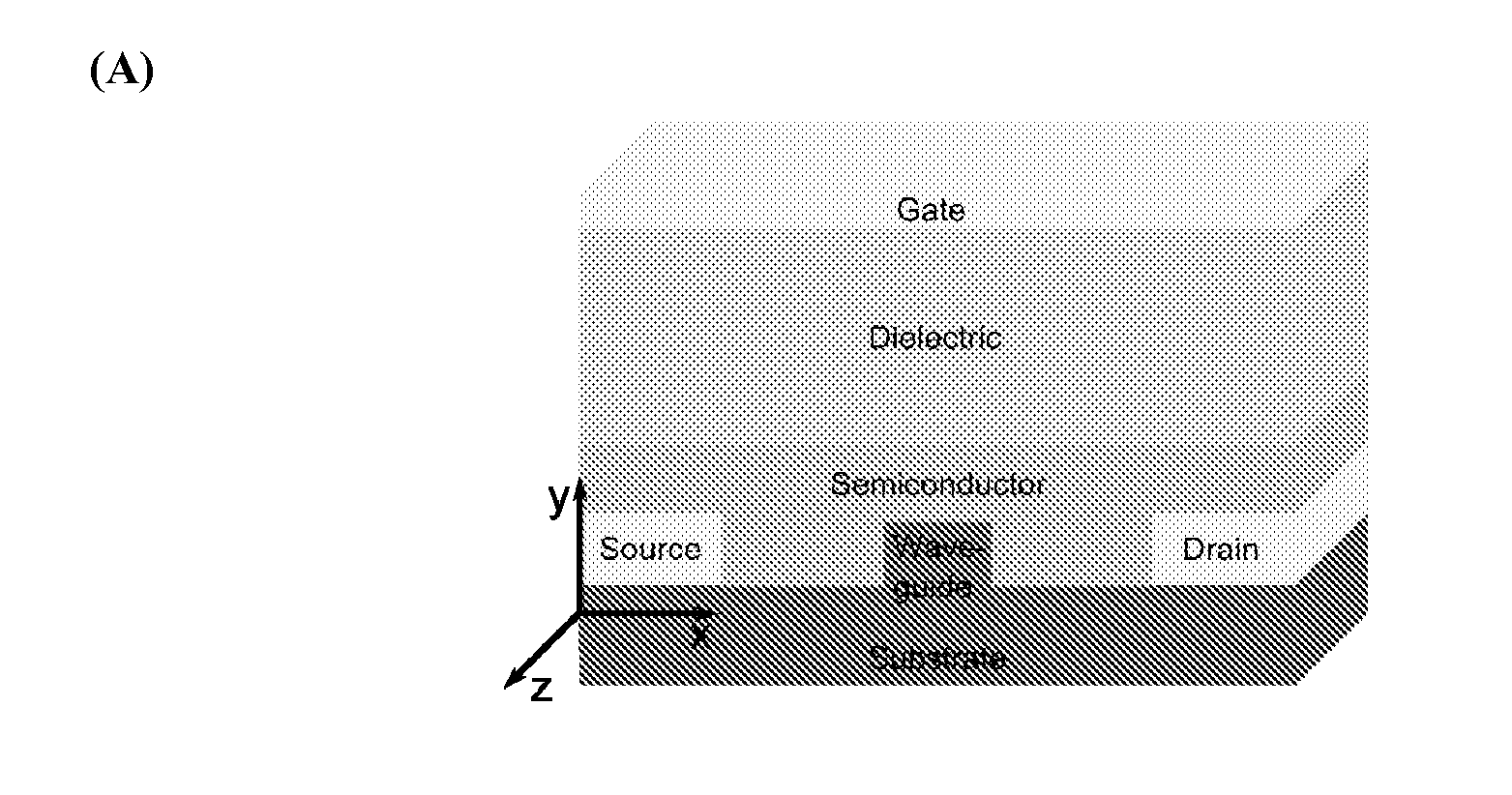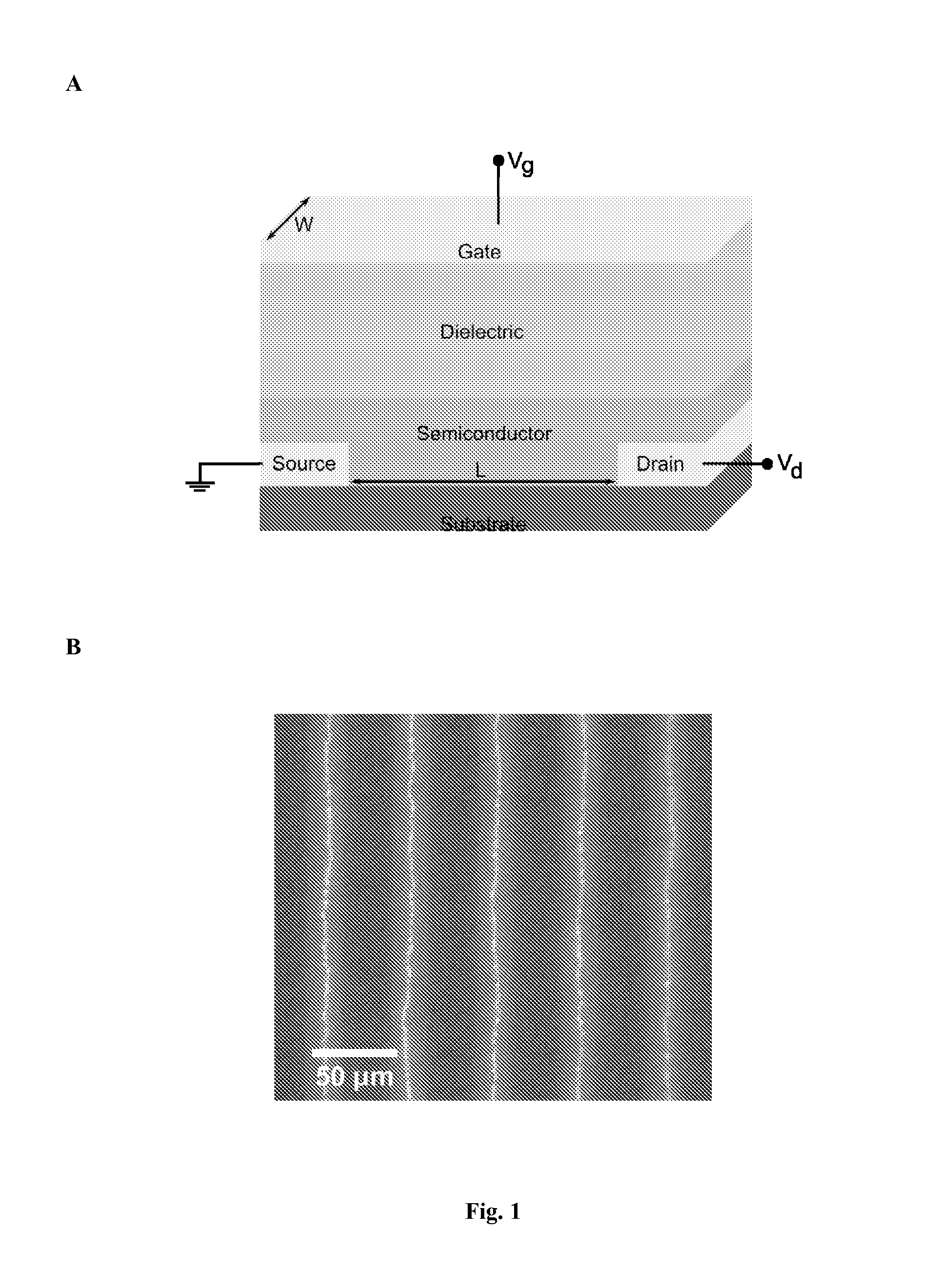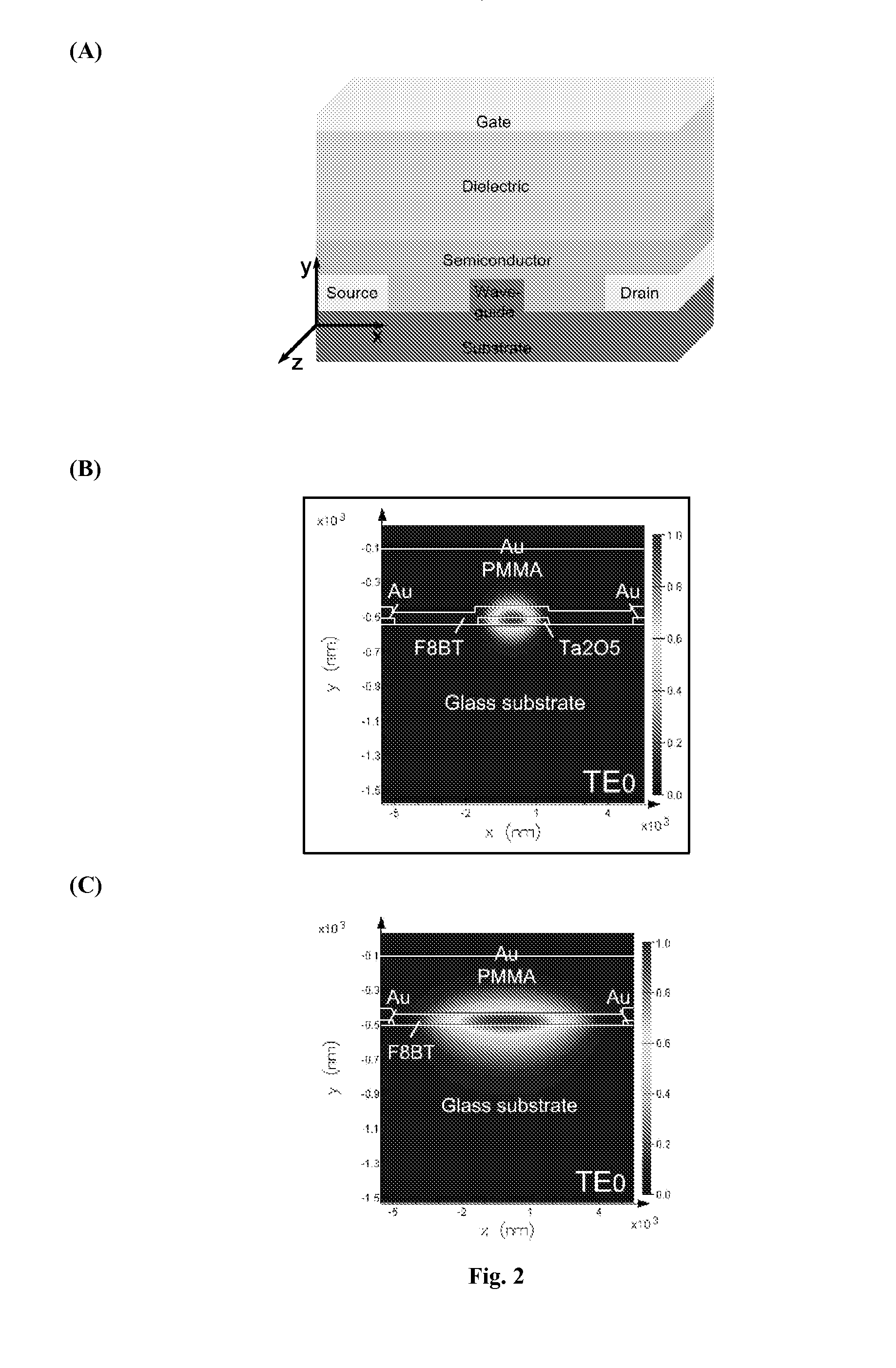Optoelectronic Devices
a technology of optoelectronic devices and optical components, applied in the direction of instruments, semiconductor lasers, optical elements, etc., can solve the problems of limited device architecture, additional optical losses that arc, and no device architecture has been proven to be suitable for the realization of electrically pumped organic semiconductor lasers, etc., to achieve low optical losses, low optical losses, and high lfet current
- Summary
- Abstract
- Description
- Claims
- Application Information
AI Technical Summary
Benefits of technology
Problems solved by technology
Method used
Image
Examples
Embodiment Construction
[0040]This invention relates to integrated optoelectronic devices comprising light-emitting field-effect transistors.
[0041]We have recently been able to demonstrate a new optoelectronic device architecture for generating light within ambipolar field-effect transistors. The structure will in the following be referred to as a light-emitting organic field-effect transistor (LFET) (Zaumseil et al, Nature Materials 5, 69 (2006), Zaumseil, et al. Adv. Funct. Materials 18, 2708 (2006), EP 05701898.8), the entire content of which are herewith included in the present application. In an ambipolar LFET, under suitable biasing conditions both electron and hole accumulation layers are simultaneously formed in the channel. At the boundary between the electron and hole accumulation region recombination occurs and emission of light is observed. It is possible to move the recombination zone across the entire channel length by varying the applied biasing conditions. (For example with source=OV, drain...
PUM
 Login to View More
Login to View More Abstract
Description
Claims
Application Information
 Login to View More
Login to View More - R&D
- Intellectual Property
- Life Sciences
- Materials
- Tech Scout
- Unparalleled Data Quality
- Higher Quality Content
- 60% Fewer Hallucinations
Browse by: Latest US Patents, China's latest patents, Technical Efficacy Thesaurus, Application Domain, Technology Topic, Popular Technical Reports.
© 2025 PatSnap. All rights reserved.Legal|Privacy policy|Modern Slavery Act Transparency Statement|Sitemap|About US| Contact US: help@patsnap.com



